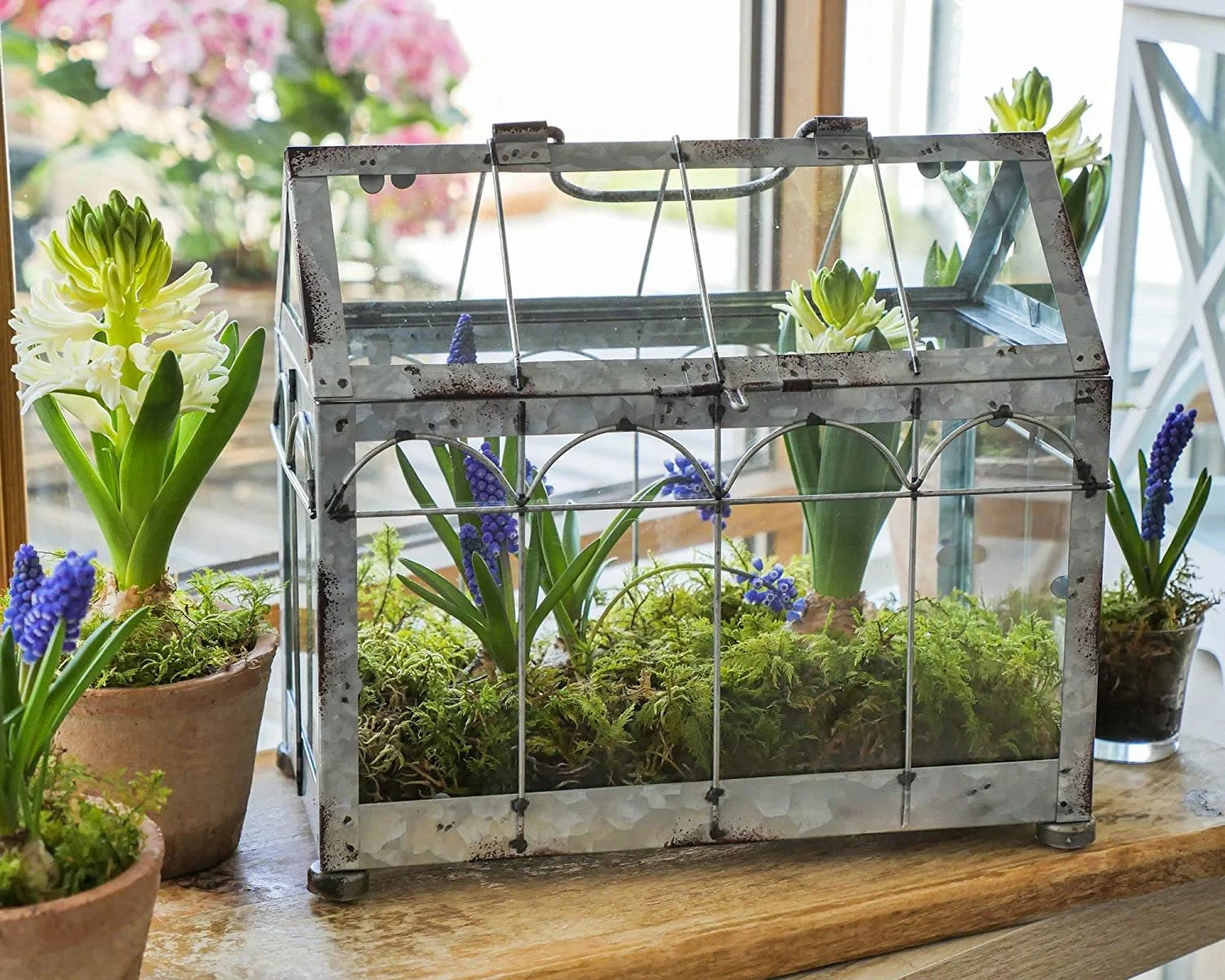Most garden centers today have a section for fairy gardens and terrariums. Fairy gardens are cute, but terrariums have a practical advantage as an indoor garden because of the relative ease of care and minimal supplies needed.
A terrarium is simply a clear glass or plastic container filled with small plants that is either tightly closed or an open transparent container for growing, displaying and transporting plants. Its was invented in the 1830s an enthusiastic naturalist, Dr. Nathaniel Bagshaw Ward, who created glass cases for growing plants and shipping them overseas.
The advantage of having a closed terrarium is that the amount of watering needed is very minimal, maybe every four to six months at most. An open container will need more frequent watering as it will dry out faster. The only downside of a closed container is the increased humidity inside the container, which could lead to greater disease incidence.
Just about any clear container can be used as a terrarium, from mason jars, fish bowls, light bulbs, Christmas ornaments, vases, and glass blocks. Construction begins by adding about a half-inch layer of drainage material that can collect excess water to the bottom of the container. This can be rock, gravel, decorative stones, or activated charcoal in the case of closed terrariums. Activated charcoal in a closed container helps absorb chemicals that could build up and become toxic to plants.
Next, the growing medium is added. This should be a soilless media that is sterile, well drained, and high in organic matter. A commercially available soilless mix works great for this. About one-fourth of the terrarium's volume should be the growing medium and drainage material.
Last, take the chosen terrarium plants from their pots and remove extra growing medium to expose the roots. Trim off any leaves that are yellowed or damaged or that show any indication of disease or insects and plant in the growing medium.
Look for plants with a slow growth rate bred specifically for miniature gardens. Choose plants of varying heights to add interest and texture to the design, and be sure to choose plants with similar light and water requirements. After planting, mist the plants to wash off growing medium that has stuck to leaves or sides of the container. Allow the container to remain open until the foliage is thoroughly dried.
Finish off the container with accessories to make your terrarium unique. Just about anything can be added to a container, as long as it's clean and doesn't introduce an insect or disease. Sea shells, rocks, ornaments, toys, trinkets, dried materials, and branches are all great things to add personality.
Once planted, terrariums are fairly low maintenance. Do not overwater, as this is by far the easiest way to kill a terrarium. Routinely remove any dying or yellowing leaves, turn the container occasionally to keep the plants growing upright normally, and do some occasional pruning based on the growth rate of the plants.


